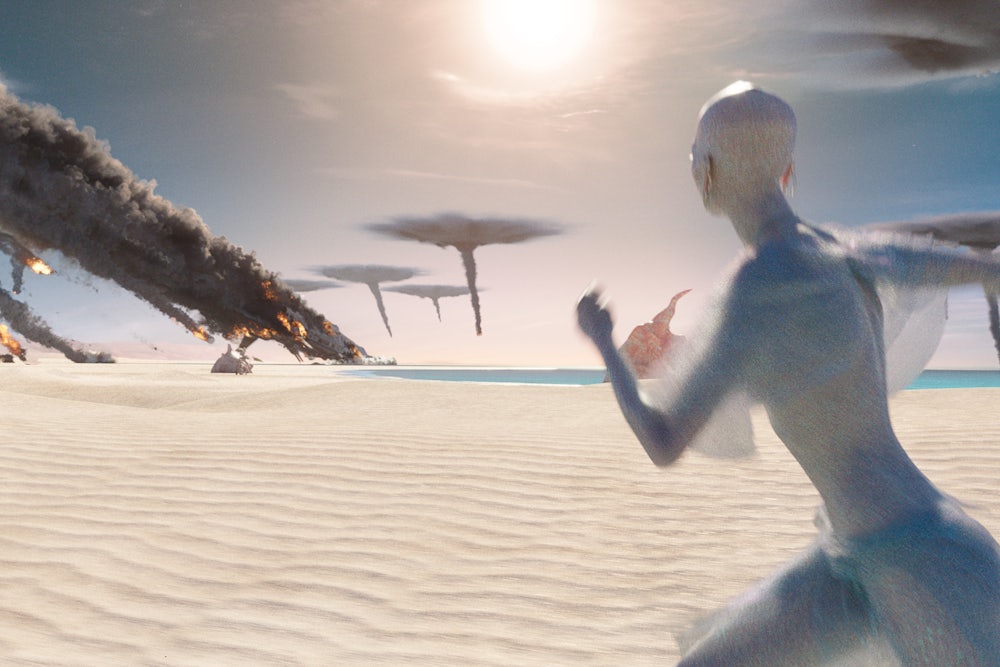Valerian is a plant whose root has for centuries been cultivated for its medicinal properties. It absolutely stinks but is supposed to put you to sleep. That anybody would name a movie after valerian is therefore extremely brave and perhaps a little stupid. But if doing brave and stupid things for the simple joy of it appeals to you, Valerian and the City of A Thousand Planets might be just what the homeopath ordered.
Valerian, directed by Luc Besson, derives it name and its fantastical world from the French comic book series Valérian and Laureline. Created by Pierre Christin and Jean-Claude Mézières, the comic was first published in 1967 by the legendary house Dargaud. As a 10-year-old boy in France, Besson would “go to the kiosk every Wednesday,” as he recalls in the film’s official press package. One day he picked up a particularly engrossing comic. “That day,” he says, “I fell in love with Laureline, and I wanted to be Valérian.”
Besson grew up to be the filmmaker who gave the world La Femme Nikita, Léon: The Professional, The Fifth Element, and more. He’s a key figure in the so-called Cinéma du look, a term coined by critic Raphaël Bassan in 1989 to describe the spectacular visual stylings of movies like Leos Carax’s Mauvais Sang and Besson’s Subway. In America, The Fifth Element is probably Besson’s most famous work. A bit of a failure upon its opening in 1997, The Fifth Element—in all its bleep-bloop orange-haired space-taxi glory—has since burrowed into our hearts.

That movie also drew on the works of Christin and Mézières. Valerian is thus something of a spiritual sibling to The Fifth Element, although it contains no material from the same world besides a bunch of blue goo. Besson claims that he had wanted to make Valerian for years, but the FX technology required to realize his vision was simply not available. Once Besson saw James Cameron’s behemoth retelling of Fern Gully, however, things changed. The fingerprints of Avatar are all over the worst parts of Valerian, notably in the people of the planet Mül, who are very tall and very nice.
The boring Mül open the first proper section of the movie, but once they’re off-stage the action begins and never stops. Meet Major Valerian (Dane DeHaan) and Sergeant Laureline (Cara Delevingne), heroic hotties of the 28th century! They spar with one another like James Bond and whatever woman he’s talking to; they fight like Jason Statham in wigs. In the first major adventure of the movie, the pair have to enter an alternate dimension on the planet Kirian, where they are to recover a tiny creature who is inside a box. It is impossible to tell what is going on at this stage but that is not a bad thing. Pow pow pow! Valerian bashes the bad guys.
From this point on it is almost futile to describe the plot, nor would it make much sense to hold DeHaan or Delevingne’s performances up to much scrutiny. They do perfectly fine. They look nice. Neither has an ounce of the magnetism, emotional range, or physical charm that Bruce Willis and Milla Jovovich held in their little fingers. Yes, Rihanna and Clive Owen are in the movie. But they get about three real minutes of screentime each, and Rihanna—spoiler alert—dies in a pile of trash. If you blink you’ll miss a star turn from Blade Runner’s Rutger Hauer, which represents the pinnacle of Valerian’s human element.
No matter: This is not where the charm of Valerian lies. The world of Valerian and its nonhuman inhabitants are unrelentingly stunning. In one sequence, Laureline has to lure a jazz-loving Frenchman to take her fishing, so that they can find a huge underwater creature called a Bromosaur and catch a jellyfish that lives on the Bromosaur, so that she can put the jellyfish on her head so that she can access the jellyfish’s knowledge of her boyfriend’s whereabouts. In another, Valerian takes a shortcut through a densely packed multi-city, running directly through a series of walls. Each time that he busts through to the other side, he enters a completely new world. Underwater scene, orchard full of fruit, techno rave, a free-fall through space—they’re all extraordinary. I couldn’t take the smile off my face.

Artist Ben Mauro and visual effects supervisor Scott Stokdyk (who won an Oscar for Spider-man 2) have created a universe that far, far exceeds the capacity of its human inhabitants to hold our attention. The influence from Yoji Shinkawa and Mœbius is clear, as is some of the hectic atmosphere of Mézières’s comic strip. Besson and his artists, illustrators, and designers spent three years developing the concept art for Valerian, 18 months on the storyboards.
Valerian is an extravaganza of beauty and imagination. Even better, despite its echoes of The Fifth Element, it is not part of a franchise. This world did not spring, Spider-man-like, from a package. Nor did it come from a major U.S. studio. Besson and his producer Virginie Besson-Silla started their own studio, EuropaCorp, which distributes Besson’s works independently, as well as running a distribution deal with the media company STX. Besson used “every trick in the independent film financing book” to get Valerian made, without handing over the reins to a big-ticket financier.
And this matters for the experience of watching Valerian. No matter how good a superhero movie is these days, it feels gross to know that your dollars are going towards propping up a franchise system that is, knotweed-like, suffocating the industry. Valerian is funny, gorgeous, and full of the type of mindbending scenarios that remind you of what fantasies are for. Cinema’s next obligation is to blend the interdimensional fireworks with a set of acting performances that can live up to the madness surrounding them, without falling back on a mess of caped archetypes.
